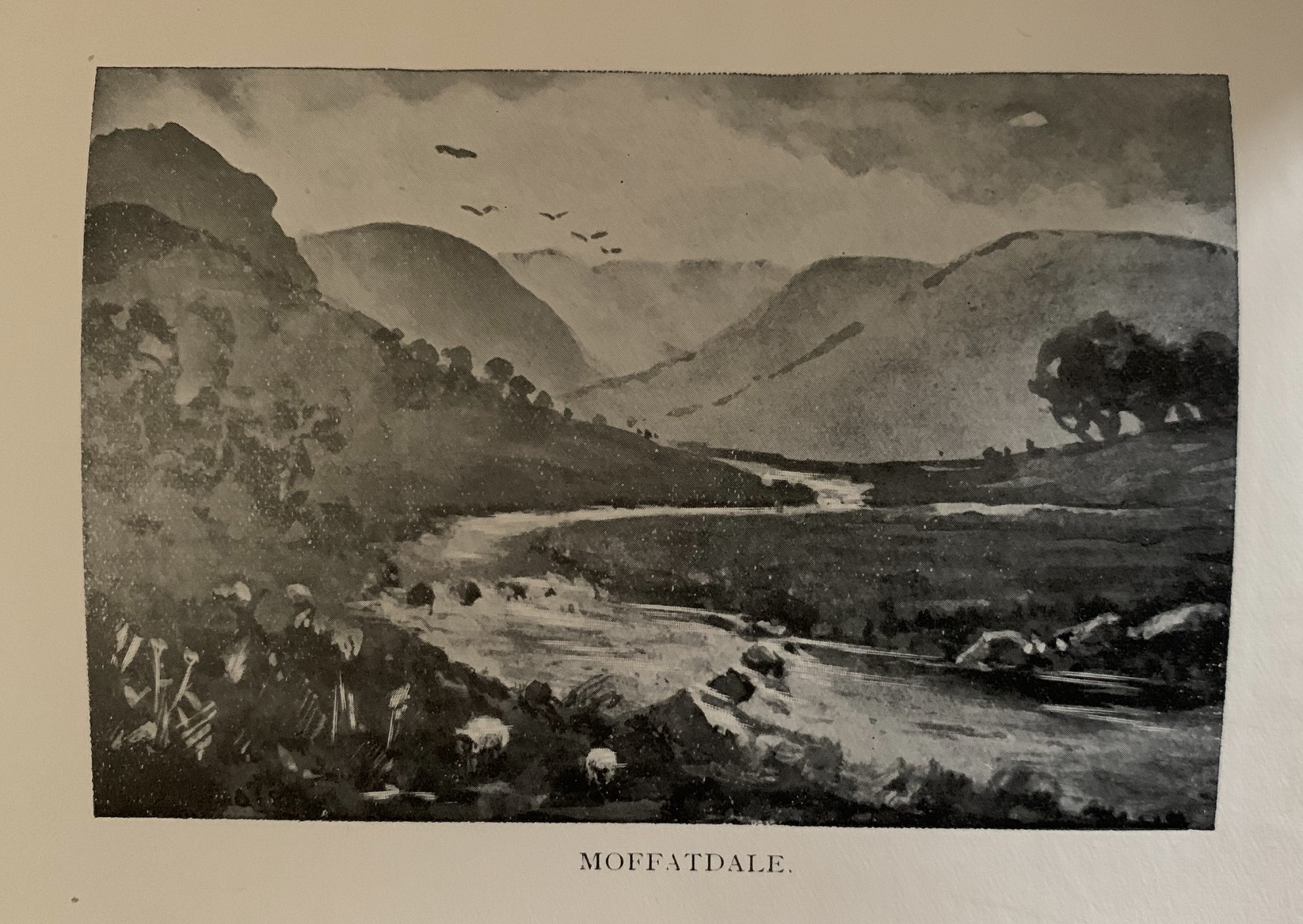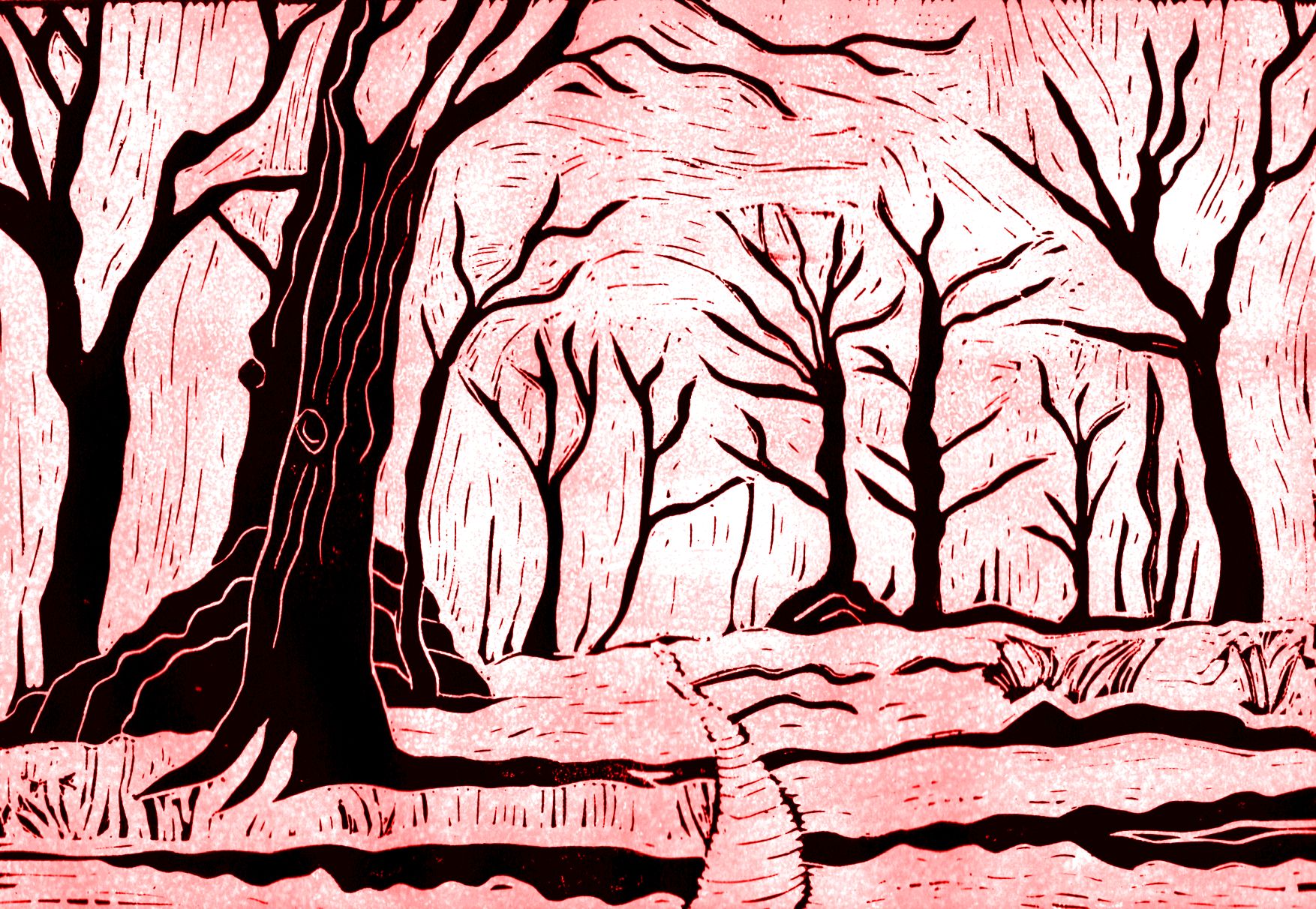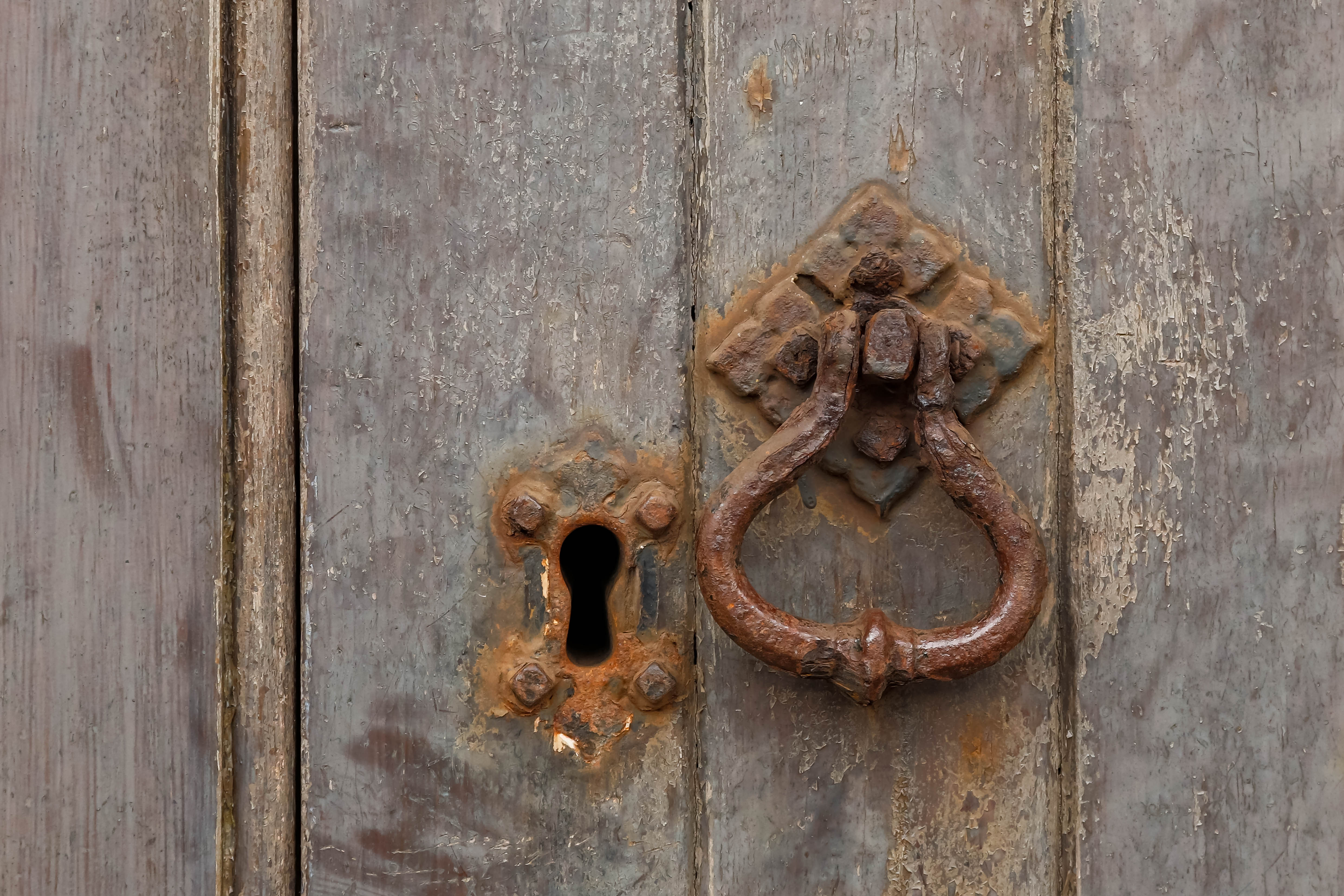Isobel Ewart was a key figure in the Calder witch hunt.
In September 1644, when the witchcraft accusations were at their height, Isobel was accused by minister Hew Kennedie of ‘scolding and railing against the kirk session’. She thought the Kirk was persecuting innocent women and accused the session of ‘making money from the witches’.
Intriguingly, Isobel’s own family had gained financially from the death of Euphame MacCalzean, an independently wealthy woman who was executed in 1591 during the infamous North Berwick witch trials.
This two-part blog pieces together what is known about Isobel Ewart, the part she played in the Calder witch hunt and links between events at Calder and the North Berwick witch trials of the 1590s.
Early life
Isobel was a daughter of Ewart of Bodesbeck1, a remote area in the hills between Moffat and St Mary’s Loch. Close to the Scottish border with England the region was notoriously violent even by 17th century standards.

Around the time of her birth* Isobel’s family was embroiled in a violent dispute with their neighbours. In April 1611 Niall Ewart of Bodesbeck (with his sons John, Alexander and Ninian Ewart, and his brothers John and David Ewart) appealed to the Privy Council in Edinburgh accusing a long list of local men of:
"having conceived a deadly malice against us, our men, tenants and servants, and our lands, possessions, corns, cattle, goods and gear. {They} brag, threaten and avow to have our lives {kill us}." 2
Being wealthy, with land, tenants and servants, offered little protection against violence but it did enable easier access to the judicial system and some recourse against adversaries.
*There’s no known record of Isobel’s birth but she married around 1625.
Marriage and life at Calder
Marriage at that time was a transaction between families rather than a romantic liaison, and Isobel joined another prosperous family when she wed Sir William Douglas, Laird of Pumpherston. Sir William was affluent and well-connected: his uncle, Sir James Sandilands of Slamannan, was a ‘favourite’ of King James VI; and his first wife, Mary Somerville, was the widow of Lord Torphichen.
Isobel and the Laird had a large family. Sir William brought at least one son from his first marriage, and Isobel gave birth to at least nine children: her son Sir James Douglas became Laird after the death of his half-brother; two sons named William were baptised in 1626 and 1627 (one or both likely died as infants); and at least six daughters1. The children were baptised at Calder and Isobel probably lived with them in a large house at Pumpherston1.
From the Ewarts of Bodesbeck to the Douglas’ of Pumpherston, there are several records of Isobel and her family using the Scottish legal system to seek recourse for violent disputes.
In 1616, some years before their marriage, Isobel’s husband was found guilty of a vicious assault on Johnne Wricht from Bridgend of Calder1. Then, in July 1634, Isobel complained to the Privy Council that she had been a victim of hamesucken*. A local man called William Douglas (not her husband) was accused of breaking into her home at the instigation of his mother, Marion Bruce. The record describes a brutal assault and Isobel, who was heavily pregnant, was only saved when her husband returned home and the attacker fled.
“William Douglas in Pumpherston came by way of hamesucken* to the complainer's {Isobel Ewart’s} dwelling house and at the instigation of Marion Bruce, his mother, entered about 10 o'clock at night when the complainer was alone. Without any offence given by her, {he} ‘shamefully put hands on her person, she being greatly with child {heavily pregnant}, and gave her many black and blue strikes in the face with his folded fists, knocked her to the ground, struck her with his feet on her belly, pulled hair out of her head, and there after drew his dagger and sword. He would not have failed to have killed her there and then if her husband had not fortunately arrived and saved her life.’ The said William {the assailant} then fled’3
*Hamesucken: an offense in Scots law of breaking into a person’s home and assaulting them there.
Thankfully, Isobel survived this horrific attack and her daughter, Isobel Douglas, was baptised in October 1634. However, ten years later and pregnant again, Isobel Ewart became embroiled in the lethal violence of the Calder witch hunt.
The Calder witch hunt

1644 was a deadly year in the parish of Calder. At least five women: Agnes Bishop, Agnes Vassie, Marion Gibson, Helen Stewart and Jonet Bruce were executed as witches. Another woman, Margaret Thomsone, was imprisoned and tortured for months but refused to confess. Others for whom records are now lost were probably also affected.
Four hundred and fifty years on it is difficult to tell exactly what was happening, when and to who. However, a series of well documented events suggest an intriguing story and Isobel Ewart is at the heart of it.
Agnes Bishop was executed as a witch at Calder in February 1644 and the other women were all killed before the end of summer 1644. It was a small rural parish of just a few hundred people and the persecution of neighbours as witches must have gripped the community. The death of Jonet Bruce in particular seems to have triggered Isobel’s action.
Here’s what happened according to the Calder kirk session, Linlithgow presbytery and Privy Council records4
On the 18th of July 1644:
Jonet Bruce is described as ‘recently executed’ and her widower David Aikman is forced to sign over 100 merks of their ‘debts, goods and gear’ to the Calder kirk session. Ostensibly this was to reimburse the session for the costs of Jonet’s imprisonment and execution as a witch, ‘any remaining’ to be used to pay for other ‘witches’ who had no money of their own.
20th August 1644:
The following month Margaret Thomsone launched an appeal to the Privy Council. This details Margaret’s refusal to confess to witchcraft despite ‘great cruelty’ by the minister, Hew Kennedie; Kirk bailie, James Sandilands; and kirk elder Sir William Sandilands. Margaret was imprisoned in the kirk vestry for around four months and during that time was dressed in sackcloth, beaten, chained in stocks and kept awake standing upright for 26 days.

22nd of September:
A month after Margaret’s appeal was lodged the Kirk session accused Isobel Ewart of being a ‘moyaner’ (a paid go-between) for ‘the witches’, and of ‘scolding and railing’ against the session by saying that they were ‘making money from the witches’.
Isobel appeared in front of the kirk session and defiantly denied the accusations, but she did say that:
‘the minister had done many things behind folk’s backs that he dare not say to their face.’
21st of November 1644:
Margaret Thomsone won her appeal and the minister and kirk session were ordered by the Lords of the Privy Council to set her free on surety {bail} of 500 merks.
4th December 1644:
Soon after the order to free Margaret, Isobel’s case was escalated to Linlithgow Presbytery. At this hearing the kirk session ramped up their charges, accusing her of slandering them by saying that they were using torture to extort confessions, executing innocent women as witches and taking the accused women’s money for their own use. Jonet Bruce’s treatment was singled out.
Is it possible that the minister and kirk session thought Isobel was behind Margaret’s appeal, and their accusations were an attempt to thwart and punish her? The timeline fits:
Jonet was killed in July; Margaret’s appeal was lodged in August; Isobel was accused of being a ‘moyaner’ in September. Margaret won her appeal in November; additional evidence was presented against Isobel in December.
Isobel’s role is intriguing. Her wealthy family would have had access to news about Margaret’s appeal and it’s possible she did no more than tell folk in the parish about it. However, the kirk session’s accusation that Isobel was a ‘moyaner’ suggests they believed there was more to her involvement than just gossip. It’s difficult to see how Margaret could have arranged and afforded an appeal to the Privy Council; Isobel, on the other hand, had the financial means and previous experience of litigation needed to lodge an appeal.
There were no further accusations of witchcraft after Margaret’s appeal concluded. It’s possible that the external scrutiny of the Privy Council ended the young minister’s crusade, frightening him more than the thought of witchcraft. Perhaps, too, parish authorities lost any support they’d had for pursuing witches when details of Margaret’s ordeal, and the way local women were being treated, became public knowledge. Whatever the reason, the appeal seems to mark the end of the Calder witch hunt.
We will probably never know what really happened, and frustratingly, there’s no record of the outcome of Isobel’s court case. However, her sixth daughter, Jeane Douglas, was baptised at Calder on the 2nd of May 1645, and deeds signed by their son, Sir James Douglas, show that Isobel and Sir William were both still alive and living at Cannielands in Calder parish in November 16721. Isobel, at least, had a long life after the witch hunt.
If Isobel did deliberately intervene her actions may have prevented further accusations and saved lives. But what really motivated her to speak out? The answer might be linked to her accusation that the kirk session were ‘making money from the witches’, and her husband’s family’s experience of doing just that during the infamous North Berwick witch trials of the 1590s…
Read part two of this blog to find out more.
References
- McCall, H, B. (1894) The history and antiquities of the parish of Mid-Calder, with some account of the religious house of Torphichen, founded upon record. British Library.
- The Register of the Privy Council of Scotland. 2Ser., V.8 (1544-1660) p316 {modern translation}
- The Register of the Privy Council of Scotland. 2Ser., V.5 p316-317 {modern translation}
- Calder Witch Hunt Project (2022) Timeline of events and list of primary sources. At: www.calderwitchhunt.co.uk/timeline
Acknowledging this work
The Calder witch hunt is a volunteer-led project, please acknowledge our work if you mention the content of this blog, thank you.





